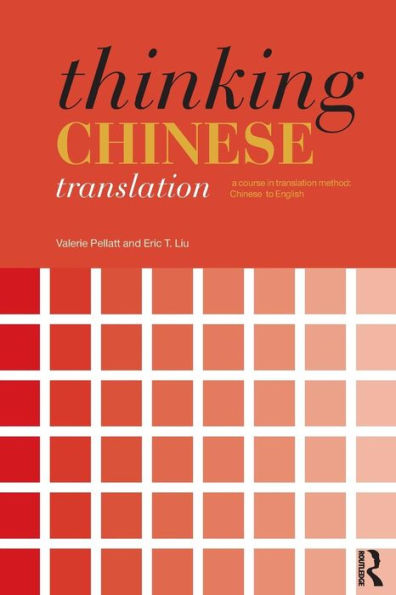Table of Contents
Acknowledgements ix
Introduction 1
History, theory and practice of Chinese translation 1
The rationale and structure of Thinking Chinese Translation 8
1 Translation as a process 11
Formal schema: decoding the marks on the page 12
Content schema: knowledge and experience 15
Implication and inference 15
The benefits of collaborative thinking 17
Reflective learning 19
2 Formal Schema - the framework: titles, sentences, punctuation and paragraphs 21
Headings and titles: signposting the text 21
Sentences: grammatical structures 25
Sentences: discoursal structures 28
Punctuation: loaded with meaning 29
Paragraphs: fleshing out the structure 33
Content schema: building knowledge, linguistic enhancement, preparation and collaboration 35
Practical 2.1 Text structure and background knowledge 36
Practical 2.2 Background knowledge of China 37
3 Growing the schema from small beginnings 39
Translating formulaic texts 39
Content, context and register in the formulaic text 41
Practical 3.1 Certificates 41
Texts without sentences 44
Dictionaries and glossaries 45
Practical 3.2 Chinese restaurant menu 47
Practical 3.3 Translating accounts 49
4 Translating technical and scientific texts 52
Technical translation: what is it? Who does it? 52
Formal schema in technical and scientific translation 55
Content schema: understanding the processes 56
Practical 4 Technical exercises 59
5 Medical translation: persuading, reporting, and diagnosing in the Western tradition 63
Public health information leaflets 64
Practical 5.1 Persuading the public: health leaflets 66
Translating medical reports 67
Practical 5.2 Patient's notes 67
6 Translating traditional Chinese medicine 72
The underlying principles of traditional Chinese medicine 72
The language of traditional Chinese medicine 74
Practical 6.1 Treatment methods: cupping 74
Practical 6.2 Textbook description of cancers 76
7 Translating for legal purposes 78
Variations in legal systems and language 78
Authority of legal translation and the responsibility of the translator 79
Legal texts as speech acts 80
Sentence structures 81
Verb forms 83
Terminology 83
Logical relations 85
Culture and ideology in legal translation 86
Domestic law translated for foreign visitors 88
International law: UN drafting 89
Practical 7.1 Analyzing bilingual laws 92
Practical 7.2 Translating domestic law on religion 94
Miscellaneous legal documents 95
Practical 7.3 Translator's statement 95
Practical 7.4 Report of legal proceedings 96
Practical 7.5 Witness statement 96
8 Translating the business world: trust and obligation 98
The world of business 98
MOU, MOA and contract 99
Tenses 100
Idiomatic usage 101
Complex sentences 101
Distinguishing the Parties 102
Practical 8.1 Translating a Memorandum of Agreement: proofreading and forensics 102
Practical 8.2 Translating a contract 104
9 Translating the nation 108
Addressing the nation 109
Translating ideology and power 110
China's special brand of power 111
The narrative of China's official discourse 112
Commissioning the translation 113
Addressing the people: the group, the individual and deixis in discourse 114
Choice of lexis 116
Metaphor and epithet 117
Numbers in Chinese official discourse 120
China addressing the world 121
Formality and courtesy 121
Friends and brothers 121
Inclusiveness 122
All things positive 123
All things great 123
Practical 9.1 Addressing the nation 124
Practical 9.2 Addressing the world 124
Practical 9.3 Addressing a developing nation 125
10 Author-translator collaboration: a case study of reportage 126
Working together: interview with Xinran and Nicky Harman 127
11 Case studies: translating autobiographical writing 132
Paratextual analysis: re-adjusting the formal schema for the foreign reader - Zhao Ziyang's diaries 133
Practical 11.1 Transforming paratextual features for the target audience 136
Translating the culture of the past: Zhang Xianliang's memoirs 137
Practical 11.2 Translating culture across time and space 140
12 Translating fiction 141
Narration 142
Translating Chengyu 143
Dialogue 145
Portraying character through dialogue 146
Expressing inner thoughts through dialogue 146
Relationship and interaction in dialogue 147
Insults 147
Description and depiction 148
Genre within genre 151
Practical 12.1 Translating description, emotion and reflection 152
Practical 12.2 Translating the frustration of youth 152
13 Translation of traditional poetry 154
Formal schema in Chinese poetry 157
Content schema in Chinese poetry 158
Trade-off in language structure 159
Translating the past: allusion and culture-specific items 162
Punctuation and space in poems 164
Singular or plural, masculine or feminine? 164
The influence of Ezra Pound 165
Practical 13.1 Translating a three-syllable shi 166
Practical 13.2 Translating a yuefu 169
14 Translating twentieth century poetry 171
Translating Guo Moruo: the new poetry of the self 172
Western cultural allusion in Guo Moruo's poetry 173
Personal pronouns and repetition 173
Practical 14.1 Discussion of Sky Dog source and target text 177
Translating the surrealism of Yang Lian 177
The Composer's Tower 179
Practical 14.2 Discussion of The Composer's Tower source and target text 182
Postscript 183
Glossary 184
Appendix 186
References 211
Index 219






